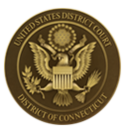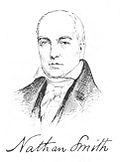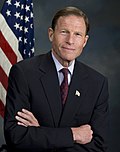Top Qs
Timeline
Chat
Perspective
United States District Court for the District of Connecticut
U.S. federal district court in Connecticut From Wikipedia, the free encyclopedia
Remove ads
The United States District Court for the District of Connecticut (in case citations, D. Conn.) is the federal district court whose jurisdiction is the state of Connecticut. The court has offices in Bridgeport, Hartford, and New Haven. Appeals from the court are heard by the United States Court of Appeals for the Second Circuit. It was one of the original 13 courts established by the Judiciary Act of 1789, 1 Stat. 73, on September 24, 1789.[1] The Court initially had a single judge, and remained so composed until March 3, 1927, when a second judge was added by 1927 44 Stat. 1348.[1] Six additional judgeships were created between 1961 and 1990 to bring about the current total of eight judges.[1] Court offices at Hartford and New Haven are located in the Abraham A. Ribicoff Federal Building and the Richard C. Lee United States Courthouse.
Cases decided by the District of Connecticut are appealed to the United States Court of Appeals for the Second Circuit (except for patent claims and claims against the U.S. government under the Tucker Act, which are appealed to the Federal Circuit).
The United States Attorney's Office for the District of Connecticut represents the United States in civil and criminal litigation in the court. As of May 12, 2025[update], the interim United States attorney is David X. Sullivan.[2]
The United States marshal for the District of Connecticut is Lawrence Bobnick.
Remove ads
Current judges
Summarize
Perspective
As of February 18, 2025[update]:
Remove ads
Vacancies and pending nominations
Former judges
- Recess appointment; formally nominated on December 2, 1873, confirmed by the United States Senate on December 8, 1873, and received commission the same day.
Remove ads
Chief judges
Chief judges have administrative responsibilities with respect to their district court. Unlike the Supreme Court, where one justice is specifically nominated to be chief, the office of chief judge rotates among the district court judges. To be chief, a judge must have been in active service on the court for at least one year, be under the age of 65, and have not previously served as chief judge.
A vacancy is filled by the judge highest in seniority among the group of qualified judges. The chief judge serves for a term of seven years, or until age 70, whichever occurs first. The age restrictions are waived if no members of the court would otherwise be qualified for the position.
When the office was created in 1948, the chief judge was the longest-serving judge who had not elected to retire, on what has since 1958 been known as senior status, or declined to serve as chief judge. After August 6, 1959, judges could not become or remain chief after turning 70 years old. The current rules have been in operation since October 1, 1982.
Remove ads
Succession of seats
Summarize
Perspective
Remove ads
List of U.S. attorneys
Remove ads
See also
Notes
External links
Wikiwand - on
Seamless Wikipedia browsing. On steroids.
Remove ads




























